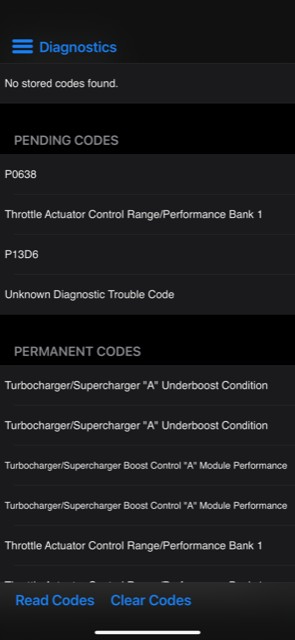Experiencing issues with your 2012 VW Golf TDI can be frustrating, especially when performance starts to decline. Many owners of this model year have encountered similar problems, often manifesting as hesitation, loss of power, and illuminated dashboard warning lights. Let’s delve into some common issues faced by 2012 VW Golf TDI owners and explore potential troubleshooting steps.
One common starting point is noticing a blinking coil light and a general lack of engine power. Initial diagnostics might point towards issues with intake manifold runner flap, often indicated by codes related to the intake system. A popular DIY fix, like installing a P2015 repair bracket, is often attempted. However, if problems persist even after this repair, further investigation is necessary.
Common symptoms can include the engine struggling to rev beyond a certain RPM range, often around 2500 RPM, coupled with fault codes indicating turbo underboost (P00AF, P0299) and EGR system malfunctions (P0402). These codes suggest potential problems within the turbocharger control system or exhaust gas recirculation system.
Troubleshooting vacuum lines and components related to turbo control is a crucial step. Start by verifying the vacuum pump’s output, ensuring it meets specifications (around 28″ Hg). Next, assess the turbo vane actuator’s ability to hold vacuum, as leaks here can impact turbo performance. The N75 valve, responsible for controlling vacuum to the turbo actuator, is another common suspect. If inconsistent vacuum delivery is detected at the N75 valve, replacement might be necessary.
Even after replacing components like the N75 valve, performance issues might linger. While the engine might rev higher, a noticeable lack of power can remain. Further diagnostic scans might reveal persistent or pending codes, even after clearing initial faults.
 Engine fault codes displayed on a diagnostic tool for a 2012 VW Golf TDI
Engine fault codes displayed on a diagnostic tool for a 2012 VW Golf TDI
Two particularly relevant codes that may surface are:
- P0638 (Throttle Valve Control Range/Performance): This code often points to issues with the throttle valve, located near the EGR valve. Carbon buildup is a common problem in diesel engines, and the throttle valve can become clogged, restricting airflow. Cleaning or replacing the throttle valve, or even addressing the internal gears within the valve assembly, are potential solutions.
- P13D6 (Cylinder 3 Glow Plug/Pressure Sensor Circuit): This code relates to the glow plug and cylinder pressure sensor in cylinder number 3. While sometimes intermittent, it could indicate a misfire or combustion issue potentially linked to airflow problems stemming from other faults.
When diagnosing these issues, consider the following points:
-
Turbo Vane Actuator Movement: A properly functioning turbo vane actuator should begin moving with minimal vacuum (around 2-3″ Hg) and reach its stop position around 15-18″ Hg. If the actuator’s travel is restricted or doesn’t reach the expected range, it could indicate a problem with the actuator itself or the turbocharger vanes being stuck due to carbon buildup. While a slight gauge inaccuracy is possible, significant deviations should be investigated.
-
Throttle Valve Inspection: Removing the throttle valve for inspection is advisable. Check for carbon deposits obstructing the valve’s movement. Manually verify the butterfly valve moves smoothly and consider inspecting the internal gears for damage or wear.
Focusing on the throttle valve and intake system is a logical next step, especially when encountering P0638. Addressing potential airflow restrictions caused by a malfunctioning or clogged throttle valve can resolve multiple related issues. While turbocharger problems are possible, addressing the more accessible and frequently problematic throttle valve first is often a more efficient diagnostic approach when no specific turbocharger-related codes are present after initial troubleshooting.
By systematically investigating these areas, 2012 VW Golf TDI owners can effectively diagnose and address common performance problems, restoring their vehicle to optimal running condition.
